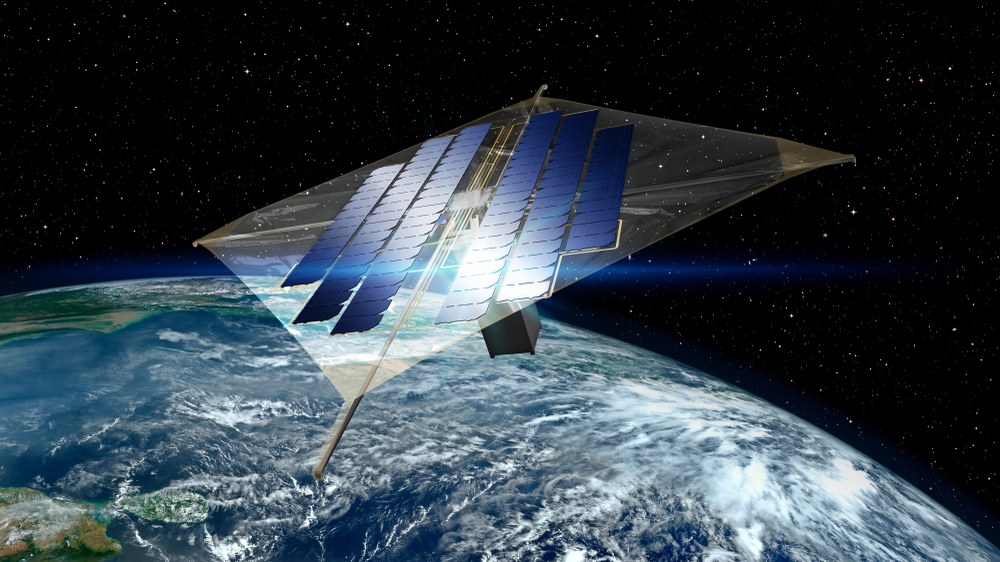DEAR 100W Solar Array

The DEAR project aims at the development of a fully functional, deployable 100°W photovoltaic array for LEO applications which can be stowed in and deployed out of a 1U volume. It shall be compatible to standard mechanical and thermal CubeSat interface requirements. The development aims at a TRL6 technology demonstration with a targeted 100 W End-of-Life power output.
The objective of the project is the development and the demonstration of a fully functional, deployable photovoltaic array which will generate 100 W power in End-of-Life conditions. It shall be compatible with mechanical and thermal CubeSat interface standards. A TRL 6 is targeted at the end of the project which will be demonstrated by environmental and functional testing. To achieve the comparably high volume-specific power output of 100kW/m³ flexible membrane-based materials in combination with thin, state-of-the-art, high efficiency solar cell assemblies besides extremely miniaturized deployment mechanisms need to be applied. Especially for Low Earth Orbit applications this is a very challenging task considering the environmental conditions in terms of UV irradiation and ATOX exposure. Materials, components and joining techniques have to be at minimum mass and thickness and must at the same time withstand several years of operation enabling a reliable power generation over a mission lifetime.
The main challenges of the project can be found in the high volume-specific power output and at the same time in the provision of a reliable and environmental resistant photovoltaic array system. To solve the design task very thin and flexible materials (which are very resistive against space environmental conditions, ATOX in particular), thin, flexible and high efficiency photovoltaic cell assemblies and miniaturized deployable structures need to be applied. It requires new and innovative joining techniques for the membrane base material, for the electrical interconnection of photovoltaic cell assemblies as well as for joining photovoltaic cell assemblies with the membrane base material.
Benefits:
- Conform to CubeSat standard
- High volume specific power output
- Usage of high efficiency photovoltaic cell assemblies
- Scalable for other applications (beyond CubeSat applications)
- Usable for a wide range of space missions
Special Features:
- Thin, flexible, high-efficiency photovoltaic cell assemblies
- ATOX resistant flexible, membrane material
- Miniaturized, deployable masts
- Joining techniques for assembly of flexible and ATOX resistant photovoltaic membrane
